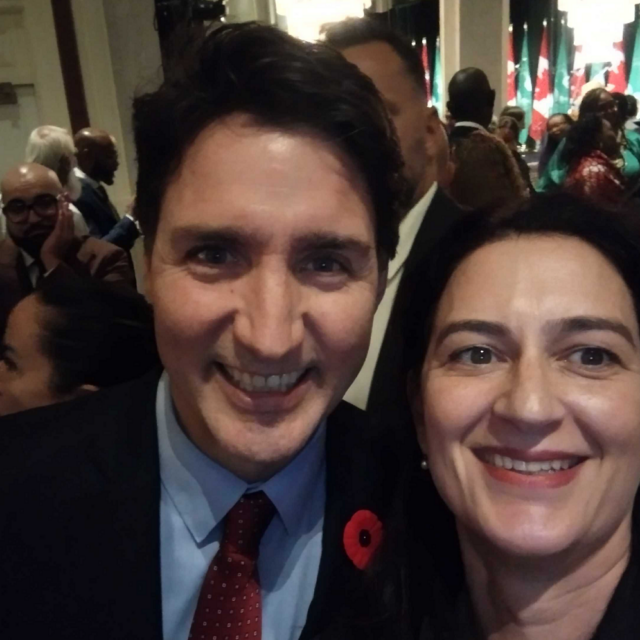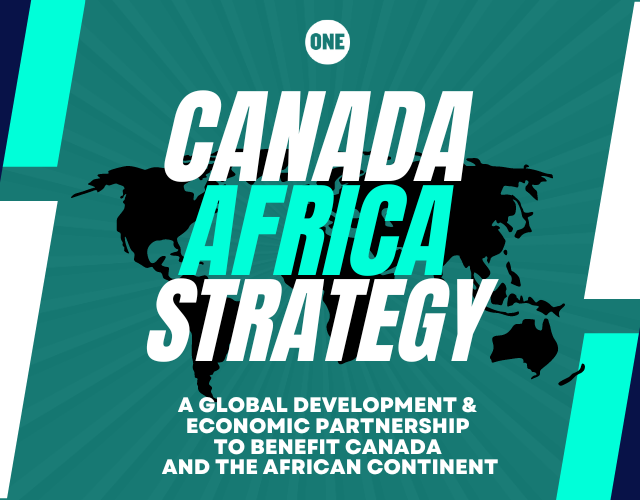What do you picture when you imagine a child looking forward to March Break?
Is it a whole week of adventure, as children play in the snow with siblings and neighbourhood friends? Maybe you remember a childhood trip during March Break, off to see the magic of Disneyland or to spend time with grandma and grandpa! If you grew up near some of Canada’s beautiful mountains and ski hills, you’ll likely recall great memories learning how to ski or snowboard.
This March, kids across Canada will be excited to take a break from school. March Break is often one of the highlights of winter. If you ask some children, they’ll happily tell you: Stopping school for a week is great!
Now, picture a child who just experienced violence, a flood or other humanitarian crisis. Not only is their community devastated, but perhaps their school is destroyed. In a disaster, their teachers may be missing, injured, or even worse: dead.
We know that education is the best way to reduce poverty. It has the potential to lift families and whole communities up towards a more prosperous future. Children who cannot return to school after disasters lose their chance to break the cycle of poverty.
During an emergency, there is a special need to make sure children still have access to education. This is a specific area of impact in which Canada can give people a much-needed hand up.
10 Areas of Impact: Education in Emergencies
Through our foreign aid budget, Canada can help make sure that when a crisis hits, learning doesn’t stop for millions of children. Currently, we invest much less than the average of other rich countries (like Germany, France, and the UK) and our generosity is at a near all-time low. What impact could we have in people’s lives if we stepped up our foreign aid investments?
Last month, we looked at vaccines, and now during March we will focus on education in emergency situations.
If we step up our foreign aid investment and spend just 10% on education in emergencies, Canada could ensure 2.3 million children have access to education when conflict or disaster hits. That’s 2.3 million children who can still work for a future where they’ll have good jobs that help their families and communities prosper.
Education is as essential as food and shelter
When thinking about how conflict affects education, it’s hard not to think about Nobel prize winner Malala Yousafzai. In her own words, Malala loved school. But everything changed when the Taliban took control of her town in Swat Valley. The extremists banned many things and enforced harsh punishments for those who defied their orders. And they said girls could no longer go to school.
Malala spoke out publicly on behalf of girls and the right to continued access to education. And this made her a target. In October 2012, on her way home from school, a masked gunman boarded her school bus and asked, “Who is Malala?” He shot her on the left side of her head.
Malala’s fight to continue learning is echoed by children in the most difficult situations around the world. You may think that when a humanitarian crisis hit, people want food and shelter more than anything. In fact, when children are asked what they want the most, their response is: education.
We often hear that education is something which, once you have it, it cannot be taken away from you. This is true, and this is why if you are 8 years old, in the middle of learning how to read, write, and count, and you stop school for many years, it will be hard to catch-up and your potential may forever be thwarted.
More than 75 million children and young people are in urgent need of educational support in crisis-affected countries. Only 50% of refugee children have access to primary education, compared with 90% of children worldwide. Unfortunately, education is neglected in emergency situations, with only 2% of humanitarian funding going directly to education.
What can Canada do?
Two years ago, Canada hosted the G7 Summit in Charlevoix, Quebec, and committed a $400 million towards girls’ education in crisis and conflict situations. These funds will be used by many NGOs and international organizations such as Education Cannot Wait to deliver projects to help ensure girls, in particular, continue their schooling when conflict or disaster hits in places like Afghanistan, Myanmar, Bangladesh or Côte d’Ivoire.
Over the course of this month, we’ll look at some of these projects to see where the Charlevoix commitment has taken us so far.
The current Liberal government committed to lead an international campaign on refugee and displaced children education. This, along with the Charlevoix declaration and financial commitment, indicates that the government wants to make education in emergencies a priority.
This is good news. But it will be hard for the government to put its money where its mouth is, unless more resources are committed. Otherwise, other priorities like women’s health or climate finance could be sacrificed and underfunded. A stagnating aid budget always puts us in a ‘robbing Peter to pay Paul’ situation.
This is why Canada must step up and increase the foreign aid budget! We can provide education to 2.3 million children affected by disasters or crises. In order to have this impact (as well as the impact in 9 other crucial areas) Canada only needs to bring our foreign aid investment up to the same level as our peers and allies.
Over the next few months, we are introducing the 10 areas of impact Canada could have in the world if we stepped up on foreign aid. To catch up on the 10 areas, read our previous blog. Last month, we talked about how Canada can help vaccinate 14 million more children each year!



